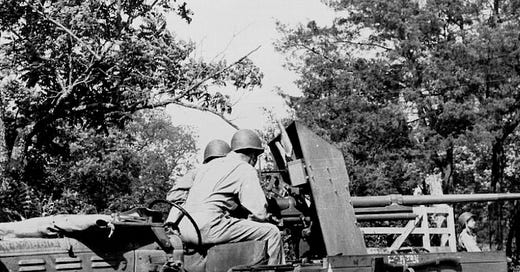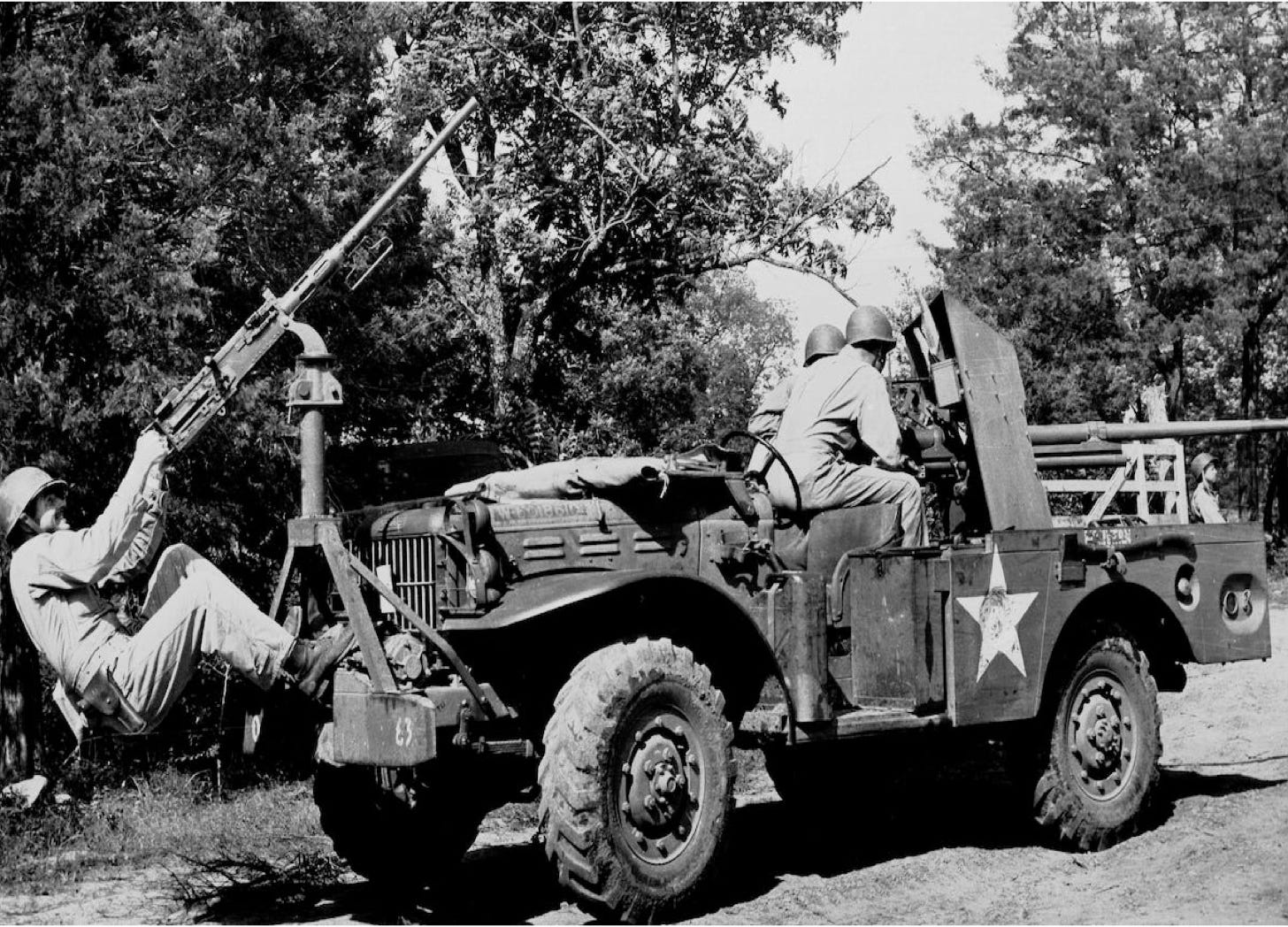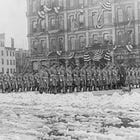The Anti-Tank Company of the US Army Infantry Regiment (April 1942)
Battalion: An Organizational Study of United States Infantry
Welcome to the Tactical Notebook, where you will find five hundred or so tales of armies that are, armies that were, and armies that might have been. If you like what you see here, please share this article with your friends.
The estate of the late John Sayen has graciously given permission to the Tactical Notebook to serialize his study of the organizational evolution of American infantry battalions. The author’s preface, as well as previously posted parts of this book, may be found via the following links:
First introduced in October of 1940, the regimental anti-tank company was one of two combatant companies of the infantry regiment that, rather than being part of a battalion, reported directly to the regimental headquarters. When organized according to the tables of organization adopted in April of 1942, this unit retained its twelve 37mm guns. At the same time, it lost the rifle squads that had been assigned, at a rate of one squad per platoon, to each of this three four-gun platoons.
As was the case with so many other units, the tables of organization of April 1942 called for the replacement of the 1/2-ton trucks of existing anti-tank companies with a mixture of 1/4-ton and 3/4-ton vehicles. (While the 3/4-ton trucks carried ammunition, the 1/4-ton machines served as command vehicles, mounts for reconnaissance patrols, and prime movers for the antitank guns.
In addition to its three anti-tank gun platoons, the anti-tank company possessed a mine-laying platoon. This consisted of three eight-man mine-laying squads and a small headquarters. The latter included two 2.5-ton trucks (for carrying mines), a surveyor (to layout minefields) and a topographic draftsman (to make maps of minefields.)
Like its predecessor, the anti-tank company was a fully motorized unit that made extensive use of radio sets. These included a long-range SCR-284 (which was mounted on a 3/4-ton truck) and five man-pack radios (either SCR-511 or SCR-300). The long-range radio connected the anti-tank company to the regimental headquarters and, at the same time, served as a station on the division tank warning net. The smaller radios connected the company headquarters to subordinate platoons.
In early 1942, the Army made plans to replace the towed 37mm guns in each anti-tank company with the M6 Motor Carriage. Inspired by the portée anti-tank guns of the armies of the British Empire, this weapon consisted of a 37mm anti-tank gun mounted on a turntable fixed to the bed of an unarmored 3/4-ton truck. Experience in North Africa, however, convinced senior American soldiers that the advantage of being able to fire the gun as soon as the truck stopped moving did not compensate for the fact that a truck was much harder to hide than a gun that was only three feet tall.
Sources:
US Army Adjutant General Table of Organization T/O 7-117 “Infantry Antitank Company” (Washington DC 1 April 1942).
Robert R. Palmer “The Reorganization of Ground Troops for Combat” in Kent Roberts Greenfield and others The U.S. Army in World War II - The Organization of Ground Combat Troops (Washington DC: Office of the Chief of Military History 1947), page 302
For more on the self propelled 37mm gun, see Major General E. N. Harmon “Operations of the 1st Armored Division in Tunisia” AFV-G2 (March-April 1980) pages 35-36
For further reading:







